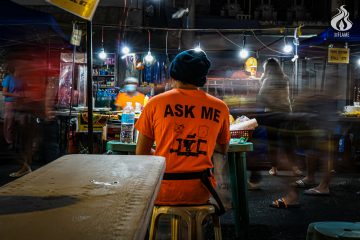By MARIA ANTIONETTE A. MALICSE

IT IS naïve to think that something as complex as a human person only has a single facet. In his film Captive, Brillante Mendoza attempted to capture the dualistic nature of man, and through injecting a flare of humanity in his characterization of the members of the Abu Sayyaf, tried to highlight the inadequacies in the Philippine government, and its lack of empathic touch in its decision-making, when, if anything, it should be its core being a sovereignty which aims to build a just and humane society.
The film is told through an omniscient point of view, from multiple perspectives. Though there is a protagonist in the persona of Thérèse Bourgoine (Isabelle Huppert), the narrative divulges into the experiences of almost everyone that appears on frame. It makes use of artistic shifting and creative transitioning to carry out this storytelling, frequently cutting to seemingly random wildlife shots which are actually charged with symbolisms and are fundamentally in parallel with the sequences that are to come after them.
With a riveting narration founded on a concept rich in substance and an impressive cast, it is not all that difficult to see the potential the film holds; however, the film in itself teaches another lesson—that potential is easier realized than actualized.
In its attempt to put forth as many perspectives on the table as possible, perhaps as means to solidify the context of the film, somewhere along the way, Captive has become too unfocused that most of the characters—including the protagonist—lost their relatability which is not exactly good for a film which aims to persuade.
Some elements of the cinematography also failed to integrate well with the storytelling as a whole. One would be able to see that these wildlife shots are attempts to inject symbolisms in the storyline, but seeing them elicits a sense of misplacement and awkwardness than that of epiphany.
And while it also clear that Mendoza’s true purpose behind humanizing the Abu Sayyaf is so that to put emphasis on the government’s lack of empathy, his characterization of the members of the terrorist group is had been a little too romanticized to the point that it would be unsurprising to find that the viewers could empathize more with them than the hostages—something which more or less trivializes the experience of those who had been kidnapped.
Though it cannot be denied that technically, they, too, are human beings, but to idealize them this way could prove to be dangerous. Getting the viewers to empathize with the terrorists could normalize their chosen methodologies.
Overall, the film has a good intention; it brims with potential. Without a doubt, it is able to flesh out the multifaceted nature of man, successfully portraying members of a terrorist group as humans like everyone else, each with their own beliefs and reason for doing things, but in doing so also dangerously entertains the idea that the end could justify the means. F



